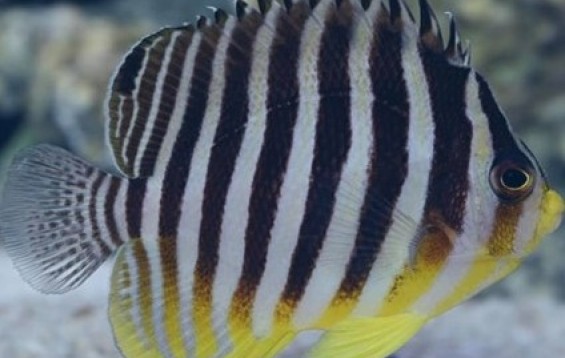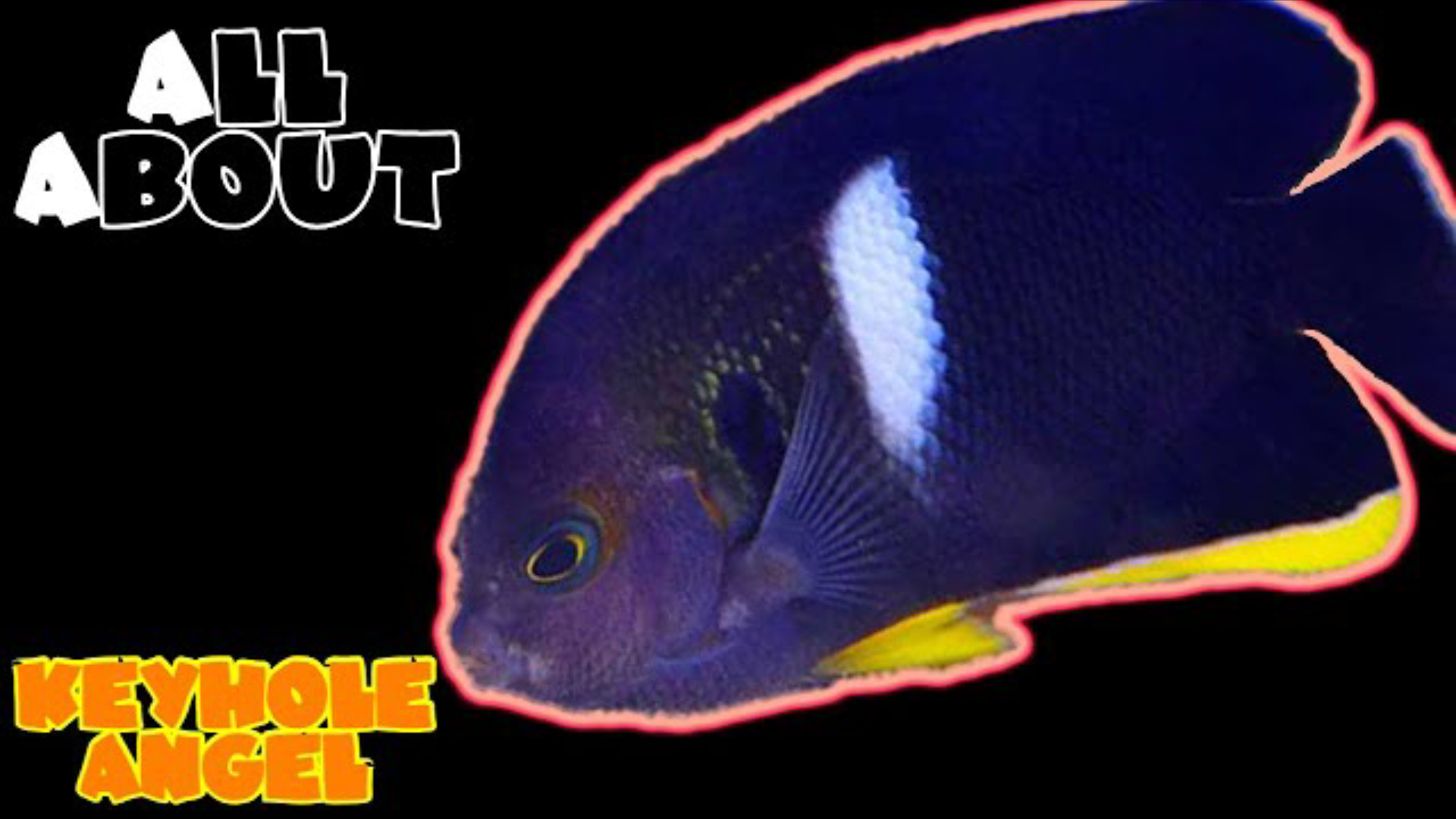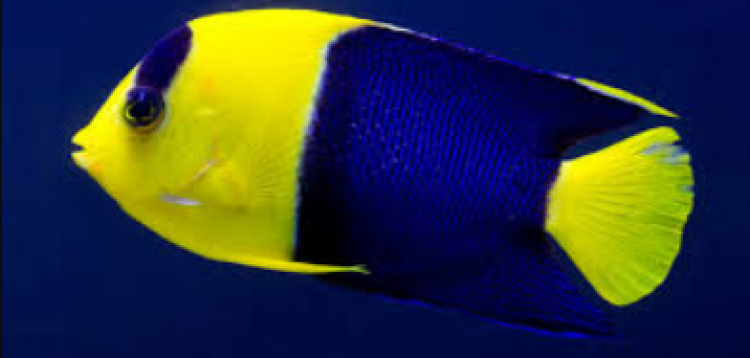- Name:
Multibar Angelfish
(View AKA's) - Family: Pomacanthidae
- Species: Angel Dwarf
- Scientific Name: Paracentropyge multifasciata


General info about Multibar Angelfish
This species is a deeper-bodied species of dwarf angelfish with a white base color with eight black vertical bars that become yellowish ventrally and it grows to 12 cm SL. Juveniles possess fewer bars and have a distinctive ocellus on their dorsal fin that fades when they grow. It is usually found to inhabit caves and crevices in outer reef slopes and can be found in dpeths between 20 to 70 m.
Multibar Angelfish Diet & Nutrition
They are known to feed on algae, sponges, tunicates and other benthic invertebrates and small crustaceans and can often be seen foraging upside-down on cave ceilings. In captivity they may bed with diet of frozen and prepared food such as pelleted fish food or flakes, Artemia, Mysis, mussels and fresh oysters.
Determining Sex of Multibar Angelfish
Paracentropyge multifasciata lives in harems with one dominant male and usually multiple females. Just like other angelfish, it is a protogynous hermaphrodite that start as females initially and the dominant and larger ones are changing to males.
Breeding & Spawning Multibar Angelfish
Barred angelfish are broadcast spawners, releasing their gametes into the water column after an intense and lengthy mating ritual that usually begins at dusk. However, it has been deemed difficult to breed in tank conditions.
Common Diseases with Multibar Angelfish
Angelfishes like the Multibar Angelfish are susceptible to common reef scourges such as parasites like White Spot Disease (Cryptocaryon irritans) or also known as Crypt, and Velvet Disease (Oodinium occelatum) which is a parasitic skin flagellate leaving white spots and golden flake lesions on the fish's skin. As a secondary infection from the parasitic and protozoan diseases. One major bacteria of concern is the Vibrio bacteria. It usually starts as an infection that turns into Dropsy, Popeye, Bleeding or Red Streaks on the skin. It is a very fast acting bacteria that can kill the fish within two days.
Multibar Angelfish Origin
Paracentropyge multifasciatus have an extensive geographical distribution across much of the Pacific Ocean, and into the Indian Ocean peripheries. More specifically in the areas of Cocos-Keeling Atoll to the Society Islands, ranging north to the Yaeyama Islands and south to the Great Barrier Reef.
Caution with Multibar Angelfish
Multibarred angelfish are known to nip on small crustaceans and worms. Provided with a large, mature aquarium with plenty of live rock and algae, this behavior might be avoided.
When first introduced in a tank, it may hide for the first day, though they may begin grazing on the rocks. As commonly seen with other dwarf angels, the Multibarred Angelfish is a territorial fish, and as such you will have to provide it with a lot of swimming space as well as plenty of crevices, holes and other hiding places.
Acclimating Multibar Angelfish
In sterile quarantine settings without live rock where not enough food can be found, as barred angelfish often do not accept artificial or frozen foods initially. Applying freshwater dips before placing P. multifasciata in their tanks is usually sufficient to prevent the introduction of protozoans via these fish.
Original Detail
| Name | Species | Family | Scientific Name | More Detail | Added by |
|---|---|---|---|---|---|
| Multibar Angelfish | Angel Dwarf | Pomacanthidae | Paracentropyge multifasciata | This species is a deeper-bodied species of dwarf angelfish with a white base color with eight black vertical bars that become yellowish ventrally and it grows to 12 cm SL. Juveniles possess fewer bars and have a distinctive ocellus on their dorsal fin that fades when they grow. It is usually found to inhabit caves and crevices in outer reef slopes and can be found in dpeths between 20 to 70 m. |
Admin |
Changed by users
| Submitted Date | Submitted By | Status | Action |
|---|



